Scott Gambler 20 - Review
Scott have been a regular force on the World Cup circuit for a number of years, and with solid results each season, it will not be long before they reach the top step on the podium. Our feature test is the 2013 Gambler 20, which is a more affordable version, built around the same chassis used on the World Cup Circuit by Brendan Fairclough and the rest of the Gstaad-Scott team. We had the '20 on test for a while, and now that Scott have pried it from our fingers, the time has come to write up our thoughts on the model that sits in the middle of Gambler range. With a suspension lineup from Fox, a Shimano Zee drivetrain, brakes by Avid and an e*Thirteen chain guide, there is no shortage of spec on this bike. No true downhill bike can ever be called cheap, but on paper, the $4,150 Gambler 20 certainly puts together an appealing pitch for being affordable.
Scott Gambler 20 Details
• Intended use: Downhill
• 6061 Hydroformed aluminium frame
• Rear wheel travel: 210mm
• Adjustable bottom bracket height via flip chip
• PF BB107 (Press fit bottom bracket)
• 12 x 150mm IDS-X Eccentric rear axle with adjustable wheelbase chips
• Shimano Zee drivetrain
• Fox Vanilla RC shock 10.5" x 3.5"
• Fox 40 Performance fork (203mm)
• Gambler 20 (as tested) MSRP: $4,149.99 (USD) / £3,299 (GBP) / €3,699 (EUR)
• Frame and Fox RC4 shock MSRP: $2,594.99 (USD) / £1,899 (GBP) / €2,299 (EUR)
Construction
While Scott have significant experience of carbon manufacturing, the Gambler continues with a 6061 aluminium frame. That said, until you look closely and spot a couple of the flush, double-pass welds on the smoothly hydroformed tubeset, the matt black frame could easily be mistaken for carbon. The Gambler chassis looks exactly like last year's model, but it has been upgraded throughout - no doubt, as a result of lessons learned on the World Cup DH circuit.
Stiffer pivot design: To improve stiffness and strength of the single pivot frame, the axle diameter has been increased from 15mm to 25mm, while the bearings are now set 20mm further apart. The amount of material and work that has gone into the area around the pivot is significant, with a single-piece forging on either side linking the stays to the floating link for the shock. This stiffness, mated to the wider pivot and bigger bearings should help keep the bike maintenance free for longer. After six months, we've seen no need to tighten anything up, and despite a lot of riding in pretty poor conditions the bearings are all still feeling smooth as silk when cycled through the range of travel without a shock.
Adjustable-angle headset cups: A change from the outgoing frame was a move away from the rotatable sleeve in the head tube in favour of the more widely accepted offset headset cups. Same effect, but different means of achieving it. Like a lot of the finishing kit on the bike, the adjustable-angle cups were Syncros items, that can be configured for zero, plus or minus one, or plus or minus two degrees of angle change. The fixed adjustment cups are easy to set up and promise to eliminate the creaks and crackles of ball-and socket type adjustable headsets.
Bump stops: Integrated bump stops are a great feature that seem to be ever more popular with the mainstream manufacturers, and for good reason as correctly executed they can significantly reduce damage to a frame in a crash. Bolted in place using a small T25 bolt they worked with both the stock Fox 40's as well as with the RockShox World Cup Boxxer we also ran for a time.
Intelligent cable routing: We liked the full housing cabling that was well routed from front to back, minimizing drag in the cables and reducing the risk of snags to almost nil. The brake is fully external which makes hot-swapping at a race a simple procedure, and the gear cable runs through the chainstay to keep it protected from chain slap. Just make sure you have shares in a zip-tie company for when the time comes to swap brakes; there are a lot of points to clip the cable to.
Scott's Floating Link Explained
Scott's new chassis is to all intents and purposes a single pivot and they make no attempt to hide this. Scott's chief engineer, Ben Walker, is a more than capable rider, and along with the development team, has spent a lot of time testing numerous pivot placements. With an eye to World Cup performance, the raised pivot on the final design was found to offer the rearward axle path they were after for big hits, while managing the downside of less efficient pedaling to an acceptable degree. What those links therefore do, rather than manipulating that axle path, is drive the long 3.5ch-in stroke shock in a manner which provides a slight rising (or progressive) rate as it moves through the travel. The long-stroke shock allows Scot to use an average leverage ratio of less than 2.5:1, which reportedly increases shock reliability enhances the effects of damping and spring rate changes.
Along with the reduction in leverage ratio, great lengths have been taken to minimize friction and force required to activate the system, and it shows, or rather feels, because the initial travel is very, very smooth. By working out the link design carefully, rotation of the shock bushes has been reduced by over two thirds, which is really quite a significant amount when you consider that it's a dry bush you're rotating, and that is naturally going to be high friction. So why 'Floating Link'? Well, much as it appears to be a motocross link flipped upside down, there are two counter-rotating links; one which is attached to the swingarm to drive the shock, the second holds everything in the correct place to control the suspension curve. It's this first link which is in essence floating as it isn't attached to the frame at either end. While first glance may make it seem like a quite complex design, it really isn't, as it incorporates no more bearings than many other multi-link bikes. Thankfully, because of the stiffness displayed by the main pivot, the ball bearings in the linkage receive little if any lateral loading, which greatly increases their lifespan.
Adjustability
The ability to tweak a bike to your every whim can be a great thing, just as much as it can be a terrible thing. And which of those statements counts for you comes down to how good you are at knowing what you want, and how you go about achieving your goal. With the included adjustable chips and headset cups it's possible to independently raise the Gambler's bottom bracket height; lengthen the wheelbase by 15mm; and alter the head angle by plus or minus two degrees. If you are the sort of rider who is happy to ride a bike as it comes, then you will have no problem leaving it in the standard settings and riding it as it is, for you will have a very capable machine.
With the myriad of adjustment on offer, there is virtually everything you need to make the bike work for you - or to configure it for any track in the world. We didn't really play around with the head angle much as, we felt it to be about as slack as we needed it, especially given we were also running it in the low setting for much of the test, but the ease with which the adjustments can be made definitely encourages you to experiment.
RIDING IMPRESSIONS
Gambler 20
 | ...Even with the stock, 350-pound spring that was way too stiff for us, the suspension still tracked incredibly well on off-camber trails, littered with tree roots. Things improved once we dropped down to a 275-pound spring, and it served to highlight that, for all the talk of reduced friction and increased sensitivity, it was actually noticeable and beneficial on the trail - something that can't always be said for marketing talk. |
Despite weighing in around the 40-pound mark, the Gambler accelerates spritely on both smooth ground and rough. he bike seems to be able to differentiate between pedaling forces and those coming up from the trail, and under power, its weight was never intrusive on the trail. On fast terrain, once the length and stiffness of the bike really started to come into its own, the ability to sprint over rough ground without getting kicked was really noticeable. We could give the bike 100-percent, while paying less attention to trail debris and ruts that would throw many bikes off line. The downside with the length of the large-size frame we chose came in sharper, slower corners where we occasionally struggled to get the power down effectively (we normally ride medium frames, which may have eliminated this problem altogether). Not once though, did we have an issue with banging the crankarms in the low bottom bracket setting, which came as a surprise, albeit a merciful one. We put this down to the natural ramp-up of the linkage which, when combined with the custom-valved shock, stabilized the ride-height and created a firm platform through which to transmit power to the ground.
At speed and in the rough: This is always going to be home territory for the Gambler. After all, a 1210mm wheelbase in the short setting, a nominal head angle of 62 degrees and a bottom bracket perfectly in line with the axles is certainly pretty raked out geometry. What we were able to deduce from our time with the bike is that at higher speeds it becomes eager and more nimble, trading a slight heavy, lumbering trait at low speed for a lack of nervousness at high.
Suspension: One thing we did notice was that even with the stock, 350-pound spring that was way too stiff for us, the suspension still tracked incredibly well on off-camber trails littered with tree roots. Things improved once we dropped down to a 275-pound spring, and it served to highlight that, for all the talk of reduced friction and increased sensitivity, it was actually noticeable and beneficial on the trail, something that can't always be said for marketing talk. For faster and rougher tracks a 300-pound spring would have been ideal the ideal choice, but thanks to the suspension's progressive geometry, we never felt as though the travel was running out too quickly, even on big compressions and G-outs. One factor which we did notice, was a tendency to feel harsh as it was battering through a succession of large bumps. We put it down to the shock being a little too over-damped on rebound, and having spoken to several privateers on the World Cup circuit, it is a feeling that they also share. Think Euro bike-park braking bumps and you're on the money of where it is most noticeable, but even then, the Gambler 20 performs within an acceptable level.

Technical riding: And when that pace does slow, what then? The centralized mass of the frame comes into effect, giving the nimble feeling which belies the weight carried by a traditional construction. Compared to some shorter and steeper bikes there was a definite cut off where the bike seemed to lose nimbleness, falling over into a world of sluggishness and ponderousness, almost as though someone had flicked an off switch. However, as long as a little gradient is there, tight is no problem, but there was definitely an element of feeling a little over-biked on some smaller trails. Get it in the mountains where it should be ridden though and no such problem exists. It also leads you to ride aggressively, utilizing the stability of the long wheelbase and the slack angles to maximum effect. If you're a rider who hides from aggressive riding then you may struggle to get the most out of it when it's tight, but the flipside of that is you should be going faster on the straights. The development of suspension and geometry has been such that the current generation of bikes are proving that slack and long can work in a wide variety of situations, and allow riders to go faster on their local trails even if their name isn't Gee, Gwin or Hill. The Scott still requires effort to hustle it through tight corners but two things stand out; get it right and it can rail tight turns fast, and then you're free to let it rip on the straights.
Overall impressions: Depending on your local riding the stock settings may work brilliantly for you. However, if your natural riding terrain is less speed and more technical you may wish to experiment with the higher bottom bracket, and/or an independent steepening of the head angle with one of the supplied cups. The added wheelbase became a real boon in faster turns, where the space between the wheels made for effortless weight transfer, and reduced any sudden step out from either wheel when on loose surfaces to make for an easily driftable machine. Overall, the package is one of cohesion, with the angles matching the progression of the suspension to give a rider great confidence both at high speed, and when the pace slows. It isn't an out and out plow bike as some World Cup bikes we have ridden in the past, although the trend seems to be moving away from that, and while the geometry gives stability at speed, you do still need to ride it nimbly when the going gets rough to get the absolute best out of it. Get your riding dialed into what the bike needs though, and it's capabilities are absolutely up there with the very best.
Component Report
Schwalbe Muddy Mary Tires: Good - The Muddy Mary is a tire which has proven itself repeatedly since its introduction to the gravity scene. The 2.35-inch casing may sound small if you're used to Maxxis' sizing but it actually comes out to be slightly bigger than a 2.5-inch High Roller. The Schwalbe DH casing is tough, stiff and very puncture resistant. Traction is ensured by Schwalbe's tacky VertStar compound, which provides optimum cornering and braking performance. Aggressive blocks wrap out the package that provides a surprisingly capable all 'round package for typical British conditions of loam, roots and loose dirt when the ground is soft and damp. Bad - VertStar compound wears quickly and the large tread blocks begin to struggle a little when they hard-pack comes out - but even then, Muddy Marys are a predictable tire that can be a genuine 'go-to' for nearly every riding condition you're likely to encounter.
E*Thirteen LG1 chainguide: Good - At first glance the LG1 chainguide looks no different to the LG1+ and as far as performance is concerned they're indistinguishable. Of course, the steel backing plate isn't as light as the more expensive LG1+, but as the weight is so low down on the bike you really would be hard pushed to notice it. Bad - The only real problem we've had with the LG1/+ is the lower jockey wheel which died prematurely.
Syncros cockpit: Good - Given that Scott now own Syncros it's no surprise to see the brand cropping up on components fitted to almost all of their bikes. But is this a bad thing? Our experience says anything but. All the components are well made, feel solid and have a classy finish that doesn't scream house brand, while the very nature of Syncros being a house brand allows Scott to integrate components properly into their bikes. The bars were perhaps a little on the wide side at 800mm but that's nothing a pipe cutter won't sort if you don't have the arms of an orangutan, and the classically color-matched blue highlights produced a very cohesive final build that looked every ounce a factory race bike. Bad - The only Syncros cockpit items that we found any criticism for were the overly thin grips, which we quickly swapped for something with a little more meat on them.
Shimano Zee drivetrian: Good - Zee comes in as a very competitive Saint-lite, offering almost as good performance for significantly less money. Zee cranks are tough, the shifter is precise, and the Shadow Plus clutch system fitted to its short-cage rear derailleur helps to keep the bike running silently. Bad - Granted, Zee isn't as tough as Saint and while we haven't had any issues with the rear derailleur, we've certainly seen more bent Zee changers than Saints. Also, the sculpting on the Zee crankarms wears down to bare metal in a hurry.
Syncros wheels: Good - Simple, reliable, and built with tried and tested components. The Formula-built hubs are pretty well sealed against the elements, and although they'll probably need a rebuild before the season is out, the cartridge bearings are mercifully easy to swap out when the time comes. The 32-millimeter-width rims, made by Alex, are a resilient option for both racing and bike park riding. Bad - The only issue we had with the wheels was that the rear wheel had a propensity for losing spoke tension. While it isn't difficult to pull a spoke wrench out, it seemed at times that the rear wheel was only good for one or two runs before the spokes got wobbly.
Avid Elixir 5 brakes: Bad - There is always going to be a downside on a bike where price has been a key factor in its spec, and while there is little wrong with Avid Elixirs per se, they are outgunned on a bike with this much potential, especially at speed. We'd like to see Shimano Zee brakes added to match the drivetrain.
Fox OEM 40 Perfomance: Bad - The performance of the 'Performance' series 40 fork was, without a doubt, the single biggest let down on the bike. With just rebound adjustment, and no ability to adjust compression, we found the constant pitch and dive to severely hamper performance. While it would no doubt feel significantly better on groomed trails, there was a further issue where the transition from rebound to compression and felt completely undamped. Initially, we thought it was just us and that we were possibly being overly critical after a lot of time riding only top-end products, but unfortunately this seems to be a common complaint from other Gambler 20 owners in the UK, given the steep, rooted and more technical nature of our tracks which often leads to a lot of rider weight sitting over the front wheel. Throwing an alternative, pro-level fork on the bike brought about an immediate transformation and allowed us to push much harder in corners without feeling that the front end was constantly diving or trying to wash away.
Pinkbike's take:
 | Scott really hit the nail on the head with their new Gambler chassis and the number of privateers choosing to run them is testament to the work they've put in to create a true racer's bike. The geometry is spot on, and although an XL wouldn't go amiss for really tall riders, the bike is very balanced in almost all situations. The only time it doesn't feel totally planted is through flatter corners where the wheelbase and raked out head angle reduce weight over the front wheel and allow it to push wide in much the same way as a car would understeer. But it's a minor criticism given its big mountain pretense and the relative sparsity of flat corners in this terrain. The price is attractive, and so too is most of the componentry. Thoughtful touches, such as the cable routing, fork bumpers and properly molded, rubber-coated chain and seat stay protectors, eliminated the need for any home-brew modifications. However, detracting from the overall performance were two specific products - the Fox 40 R fork and the Elixir 5 brakes. The brakes felt a little under-powered, especially on the back of riding a bike with the Zee brakes, a setup that would have been a perfect complement to the Shimano Zee drivetrain. The second issue, with the Fox 40 R fork, was a more deeply rooted problem, and one which dented our confidence on the roughest and most challenging terrain. Overall though, the new Gambler is a very capable downhiller, with more adjustment than any rider is likely to need, and a capable suspension system that provides great traction and stability, urging its rider to go faster and harder with each successive run. - Alasdair MacLennan |
www.scott-sports.com
Author Info:
Must Read This Week
Sign Up for the Pinkbike Newsletter - All the Biggest, Most Interesting Stories in your Inbox
PB Newsletter Signup
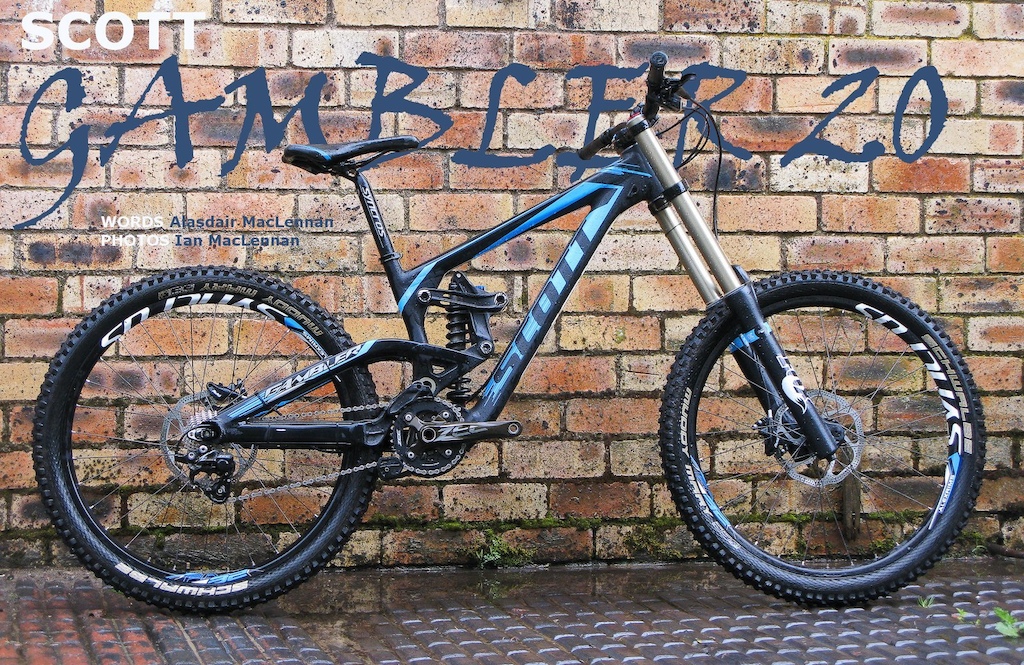
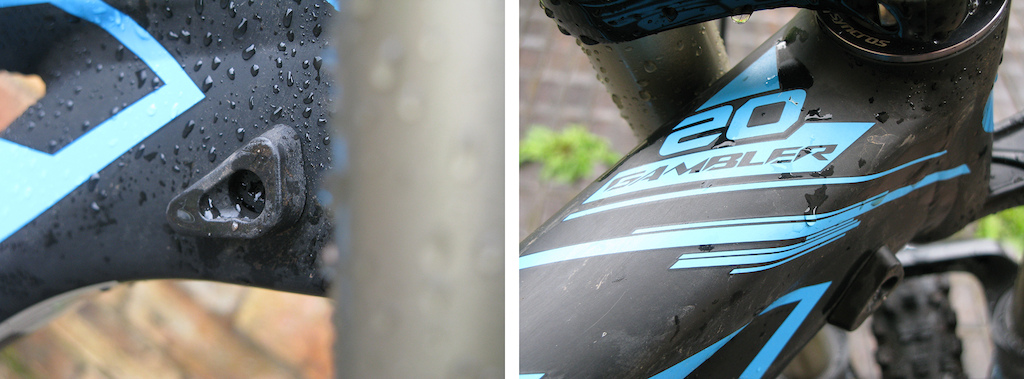

 Scott's fork bumpers are well designed and do not detract from the smooth lines of its hydroformed frame tubes. Flush, double-pass welds give the frame a molded carbon look and external cables are used where quick access in the pits is of paramount concern.
Scott's fork bumpers are well designed and do not detract from the smooth lines of its hydroformed frame tubes. Flush, double-pass welds give the frame a molded carbon look and external cables are used where quick access in the pits is of paramount concern.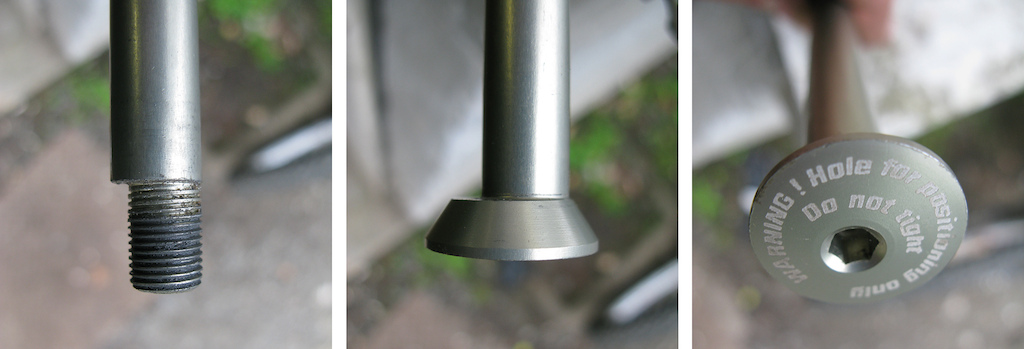

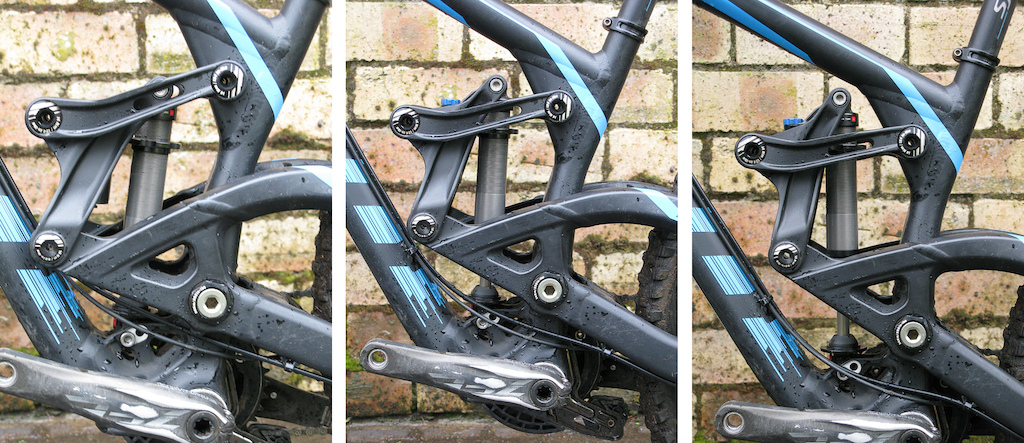

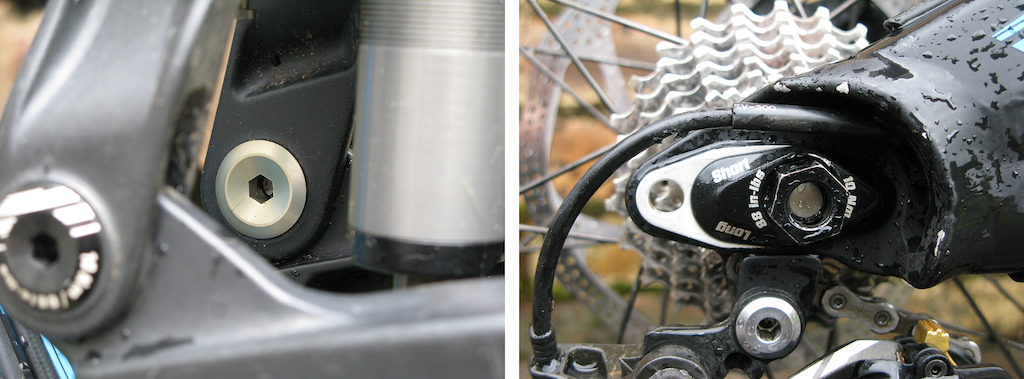
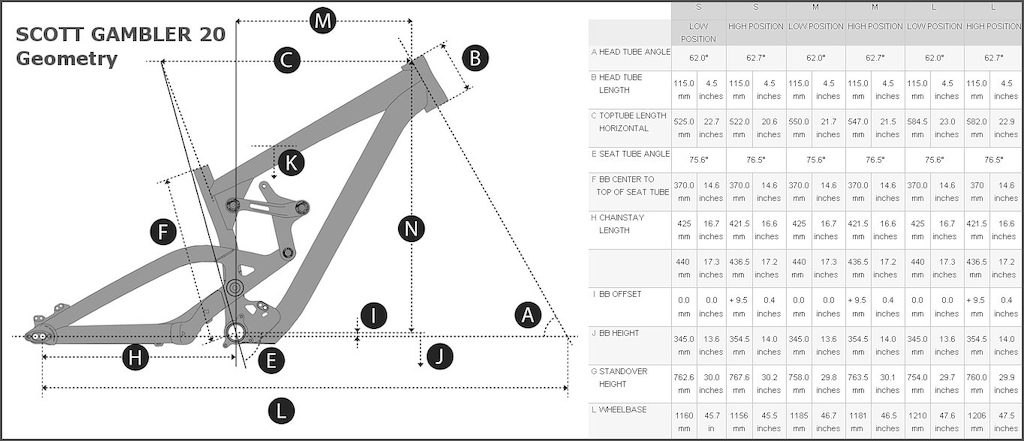
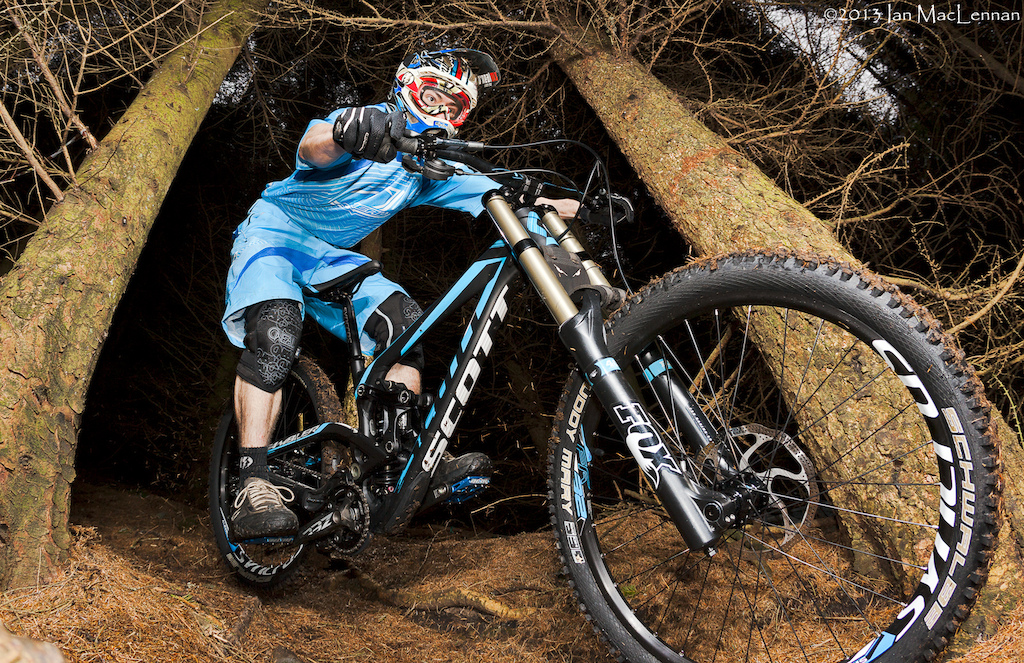

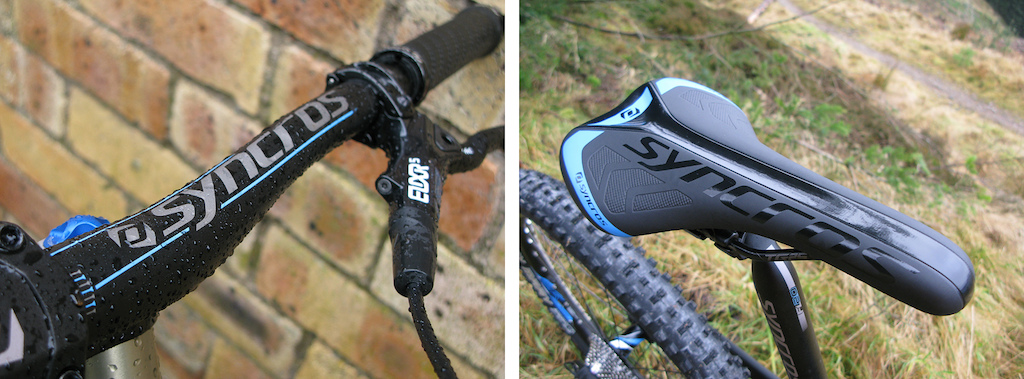
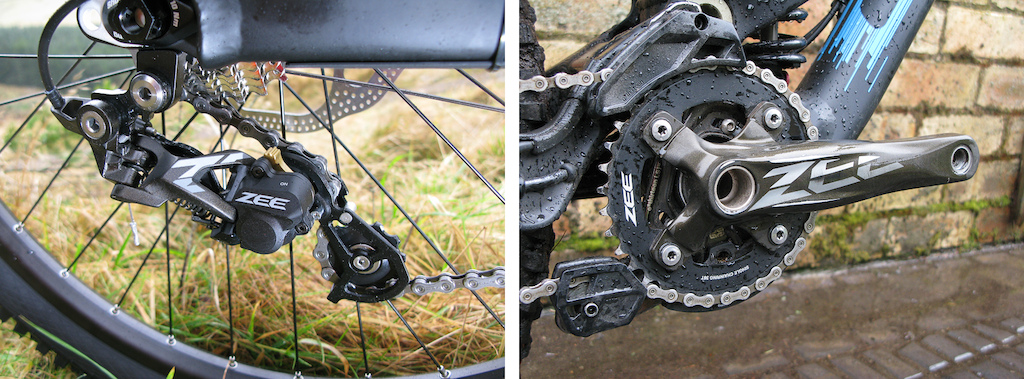

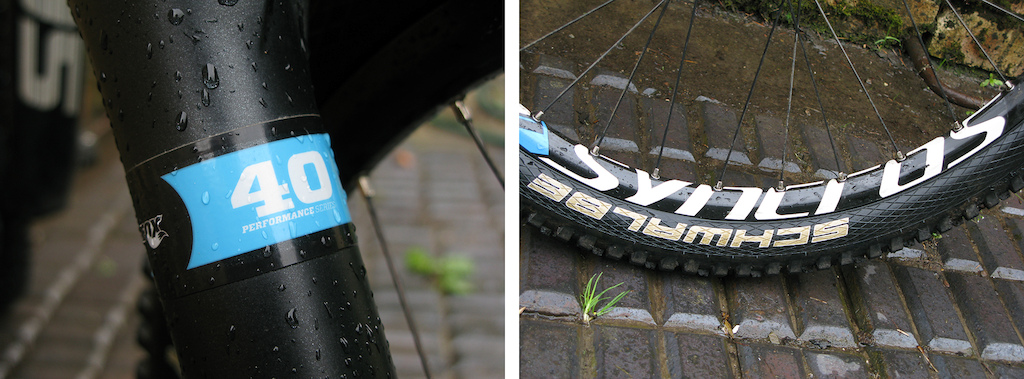
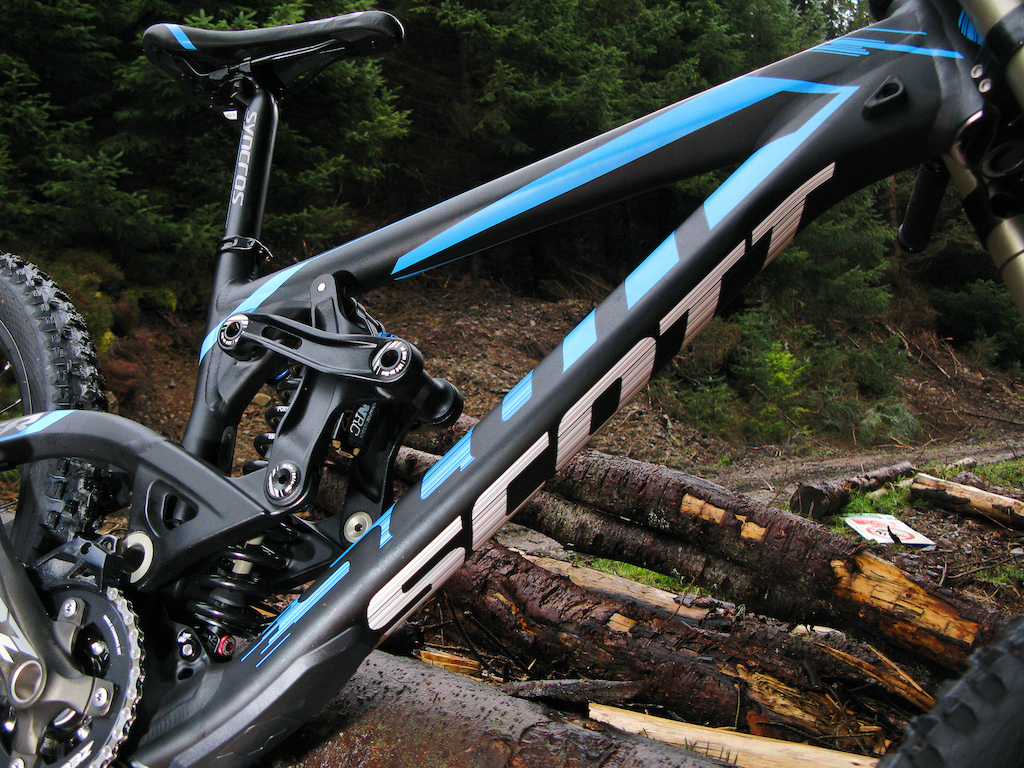

 Member since May 26, 2003
Member since May 26, 2003
why is it that the big business wanna just be greedy, why cant you just do it to fuel peoples desire to be constructive and get out and exersise
im sure that if you did that you would get people a million times better than semenuk or all the other riders.
People would be doing triple front flips and the sport would really be recognised
and it was pretty clear honda isn't working on their dh bike any longer after they pulled the pin on it aeons ago, they crushed all existing bikes. and if the price of the gambler made you shocked you might pass out if we had a RRP for a honda.
pb brings this bike in test... (www.yt-industries.com/shop/en/Bikes/Gravity/TuEs-2.0-Pro)
gives the gold award cause it deserves it...
starts to sell hundreds...thousands pieces
some months later every other bike company goes bankrupt...
pb also goes bankrupt
every racer in wc dh rides a yt tues 2.0
sam hill wins everything cause he is the best rider
i become millionaire cause i have bought stocks from the company
:P
You can deny it all you want, but actions speak louder than words.
While I don't usually jump in to defend myself or the website, I know that I am very impartial when it comes to reviews - I'm actually not even aware of all of those who do advertise on the site. Anyways, feel free to go through my blog if you want to see me call out some products. Here is a 'Product Pick' piece from just last week: www.pinkbike.com/news/Pinkbike-Product-Picks-july-26-2013.html as one example of some of the ''actions'' that you speak of. I can offer you plenty of more examples if you'd rather choose to assume things instead of looking at some past work of mine on here.
:p
if you build a bike where you can set so many different things it would be interesting to read about how it rides when you change the different settings, or not!?
Whoops...
I would like to see the same happen for DH bike tests. Take the chains off. Find a steep bit of DH track, use data loggers and record every bike and every test rider. That way, we can all see which bike holds speed, which bike corners, etc. We need to get scientific, then no one can cry foul about bike companies paying off the press like we all know they indirectly do via advertising.
The headset though.... Sounds like a machine gun and gets dirt in the bottom bearings constantly. I'm at around 4 overhauls now.
Don't think I even want to see what a high end bike will cost...
From an early review of the Dorado:
So what do I really think?
The truth is that no matter how good the Dorado is, and it really is that good, there will be those that will find fault with it. Let's be honest here, it could be easy to find something to pick out: it's carbon and no matter how much proof is out there or how well it is made you are sure that you will snap it in two simply by loading it onto your bike rack! And of course it's inverted and you simply will not be able to ride down your local hill without the front wheel pointing off in the wrong direction! Oh yeah, it's holy-shit expensive and you... Ok, I'll give you that one as I'll never be able to afford it either! But wait, the new aluminum legged version sporting the same amazing internals could be just the ticket for us bike bums. I'll be truthful, when bits of info and pictures of the new Dorado were first made available I immediately balked at the prospect of the new fork. Even though I'd had plenty of great experiences with TPC+ damping in both the original Dorado, and later a much loved 7" Travis, I still was not sold on the new fork as a whole. At a much greater price than some of the competition, as well as a much flashier appearance, I almost wanted it to not live up to the expectations. That is obviously not the case. As much as I would like to find fault with the Dorado, speaking strictly about the fork's performance, I simply can't. Pretty much every suspension company out there manages to produce a full fledged DH fork that will never hold most of us back, none of the other top forks are exactly dogs, but with the Dorado on the front of my bike I had more confidence than ever before and that says a lot. At the end of it you can find all the faults you like, the reality is that this is the highest performing no-compromise DH fork available to consumers out of the box.
Mike "Kakah" Levy
www.vitalmtb.com/product/guide/Forks,33/Manitou/Dorado-Expert,11885
Keep your tinfoil hat on to protect you from information that doesn't come from Fox Marketing, the most reliable source of information on the competition's suspension designs!!!!
Gwin and Gee said it was too flexy. I'll believe them over a bike review. Can bike reviewers really hold a candle to that calibre of a top WC rider?
www.btt.com.ar/foto/o/10/77/1077681833_astrix_halo.jpg
Many C`dales came apart in the nineties and they actually only looked good and smooth in a dark shopenvironment. My frame failed twice.
This shot may illustrate it better: www.pinkbike.com/photo/9841036
There's at least 10mm between the tyre and arch.
Why would you not use a falling rate linkage that starts off at 3 to 1 and falls off to 2.5 to 1 at the end of the stroke? Plush at the beginning and does not bottom out easily.
@Wakaba: Fox, and most other shock designers with the exception of BOS and Cane Creek/Ohlins use large shafts to provide high volume fluid displacement, and in essence a small air spring, which creates a progressive spring curve. In contrast, the BOS and CC use a small diameter shaft and rely on pure damping to control the shaft speed.
img826.imageshack.us/img826/6956/pbpic10539961.jpg
Small correction, I am not the Chier Engineer at Scott. That title belongs Benoit Grelier. Furthermore, Mathieu Landre was the engineer on this bike. I am a Product Manager and was one of many to work on this bike.
Thanks!
Ben